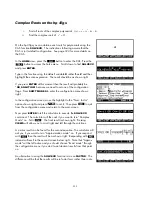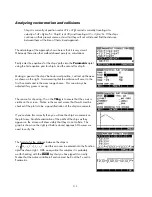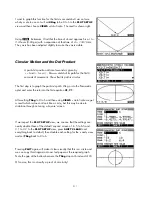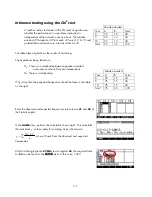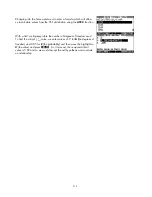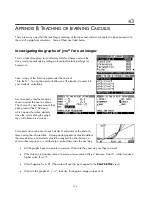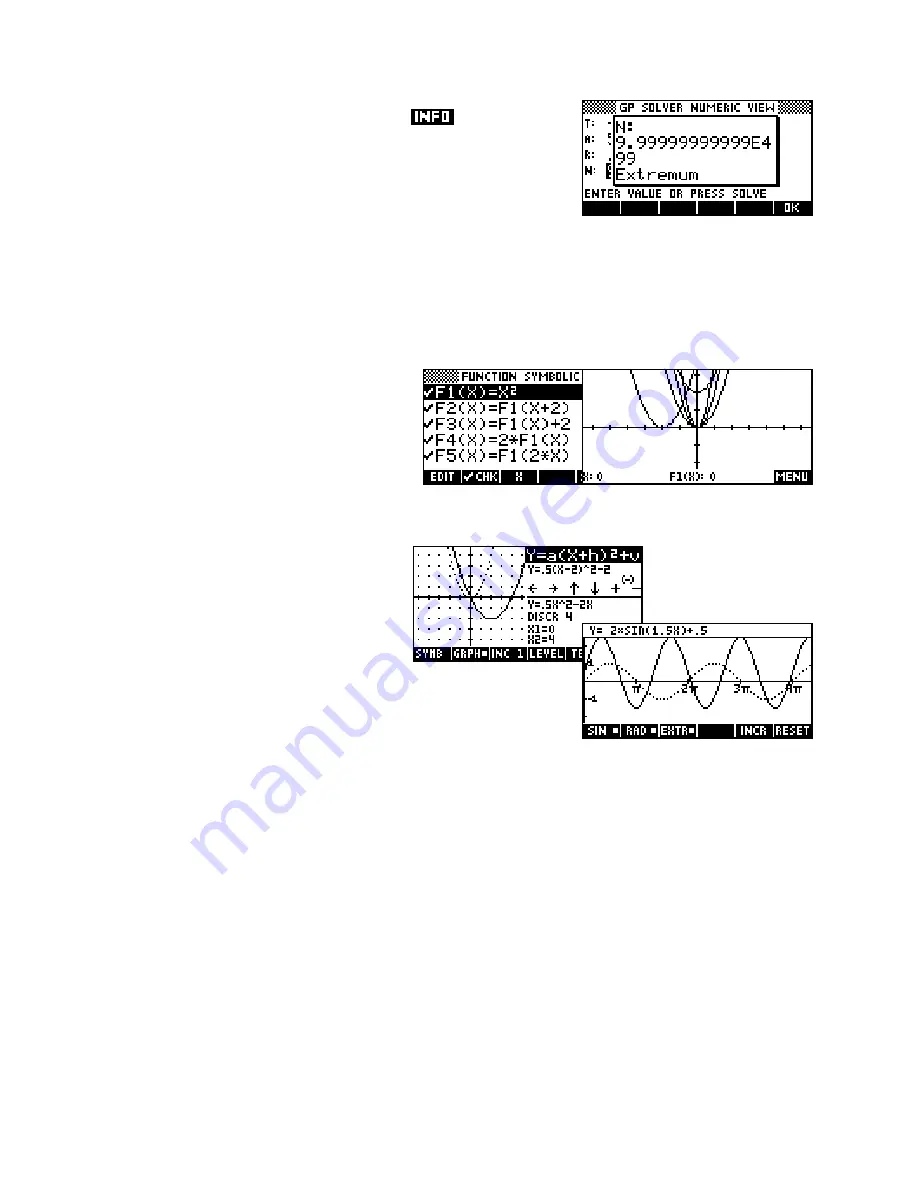
Students should also be encouraged to press the
button after
finding a solution since a case like this will give ‘Extremum’ whereas a
correct solution will result in either ‘Zero’ or ‘Sign Reversal’. See the
manual for more information.
T
T
r
r
a
a
n
n
s
s
f
f
o
o
r
r
m
m
a
a
t
t
i
i
o
o
n
n
s
s
o
o
f
f
G
G
r
r
a
a
p
p
h
h
s
s
This topic can be handled in a number of ways. One of these is to use the Function aplet without
enhancement.
Enter the basic function into
F1(X)
. For
example, you might enter
F1(X)=X
2
.
You can then enter transformations into the other
functions. Some examples, together with the
resulting graphs are shown right.
This process will also work with piecewise defined functions which are often the type that are used in
examination questions.
There are also two aplets which can aid
greatly in this process called “Quad Explorer”
and “Trig Explorer” and are built into the
calculator. Both of these aplets allow the
student to explore the effect of changing parameters on the shape of the
graph, one using a quadratic and the other with the sine and cosine
curves. Students can choose to manipulate the graph and see the effect
on the parameters, or to manipulate the parameters and see the effect on
the graph. In Quad Explorer there is even a “test yourself” facility provided which will present the student
with examples of quadratics for which they must provide an equation, with visual feedback on incorrect
guesses. These are highly recommended. See pages 159 & 162.
323

